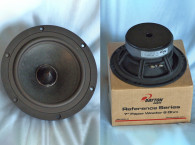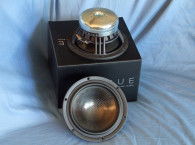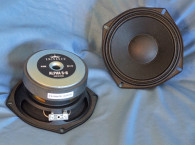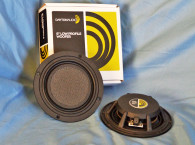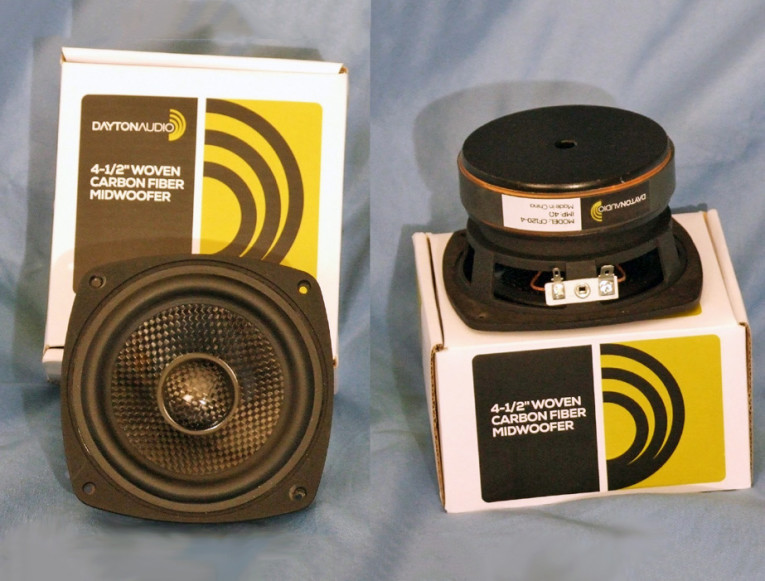
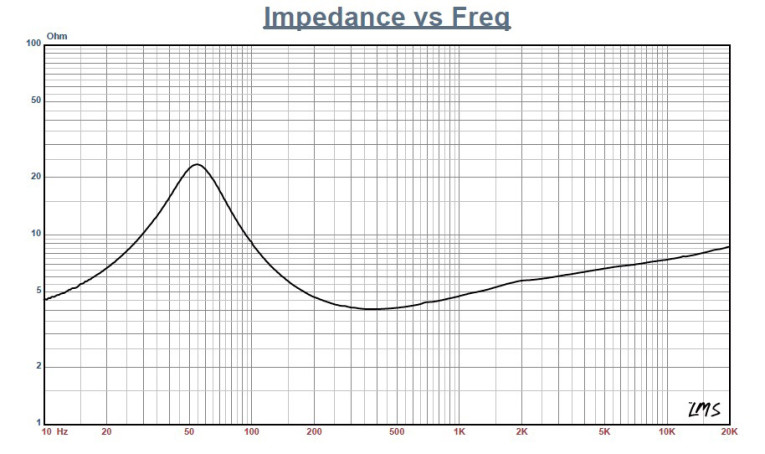

The CF120-4’s motor design incorporates an 88 mm × 15 mm ferrite magnet sandwiched between black emissive coated T-yoke back-plate and front-plate. This also includes a copper cap shorting ring (Faraday shield) installed on the pole piece. The CF120-4 uses a black anodized 25.4 mm diameter aluminum voice coil former, wound with round copper wire, and terminated to a standard set of solderable terminals. In terms of physical appearance, this is very good-looking driver.
I commenced analysis of the CF120-4 using the LinearX LMS analyzer and VIBox to create both voltage and admittance (current) curves with the driver clamped to a rigid test fixture in free-air at 0.3, 1, 3, 6, and 10 V. As I would expect, I had to discard the 10 V as they were too nonlinear for LEAP to get a good curve fit. As has become the protocol for Test Bench testing, I no longer use a single added mass measurement to determine VAS. Instead, I use the actual measured cone assembly mass (Mmd) supplied by the driver manufacturer, which was 6.7 grams for the Dayton 4.5” woofer.
Next, I post-processed the 10 550 point-stepped sine wave sweeps for each CF120-4 sample and divided the voltage curves by the current curves (admittance) to derive impedance curves, phase added by the LMS calculation method. I imported them, along with the accompanying voltage curves, to the LEAP 5 Enclosure Shop software.
Since most Thiele-Small (T-S) data provided by OEM manufacturers is generated using either the standard model or the LEAP 4 TSL model, I additionally created a LEAP 4 TSL parameter set using the 1 V free-air curves. I selected the complete data set, the multiple voltage impedance curves for the LTD model, and the 1 V impedance curve for the TSL model in LEAP 5’s transducer derivation menu and created the parameters for the computer box simulations. Figure 1 shows the 1 V free-air impedance curve. Table 1 compares the LEAP 5 LTD, TSL, and the factory published parameters for both of Dayton Audio CF120-4 samples.

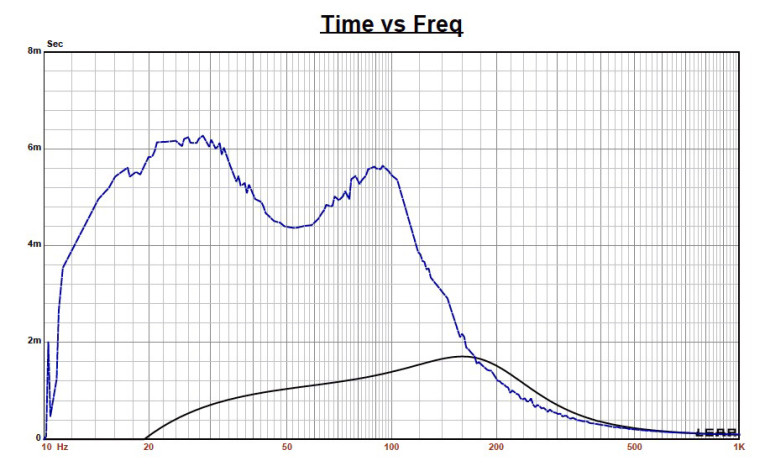
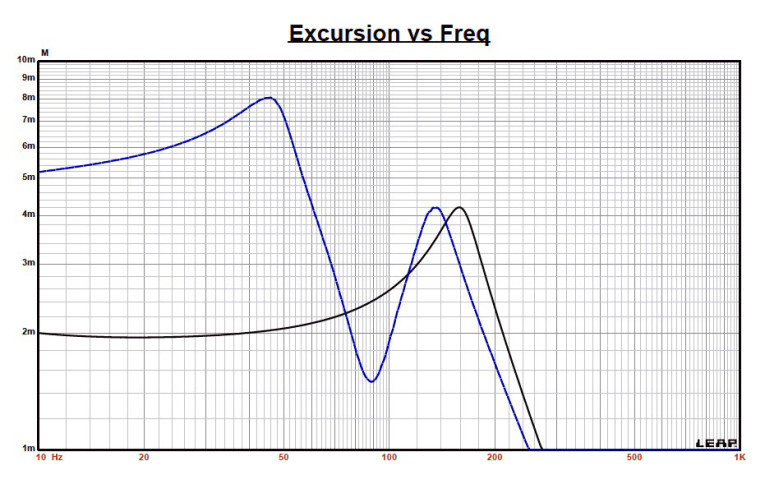
The CF120-4’s LEAP parameter calculation results were close to the published factory data. Following my normal protocol, I used the LEAP LTD parameters for Sample 1 to set up computer enclosure simulations. I programmed two computer box simulations into LEAP 5, both recommended by Dayton Audio. The first was a sealed enclosure with a 34.6 in3 volume with 50% fiberglass fill material, and a vented box with a 103.7 in3 volume tuned to 84 Hz with 15% fiberglass damping material.
Figure 2 shows the CF120-4’s results in the vented and sealed boxes at 2.83 V and at a voltage level sufficiently high enough to increase cone excursion to 4.02 mm (XMAX + 15%). This produced a F3 frequency of 159 Hz (F6 = 129.5 Hz) with a QTC = 0.78 for the sealed enclosure and –3 dB = 99.6 Hz (F6 = 84 Hz) for the vented alignment.
Increasing the voltage input to the simulations until the maximum linear cone excursion was reached resulted in 107 dB at 30 V for the closed box enclosure simulation and 108 dB for the same 30 V input level for the larger vented box.
Figure 3 shows the CF120-4’s 2.83 V group delay curves. Figure 4 shows the CF120-4’s 30 V excursion curves. The vented box example reached 4 mm of excursion at about 60 Hz, so adding a steep 24 dB/octave high-pass active filter located about 45 to 50 Hz would prevent over excursion and distortion for vented box example by a substantial margin.

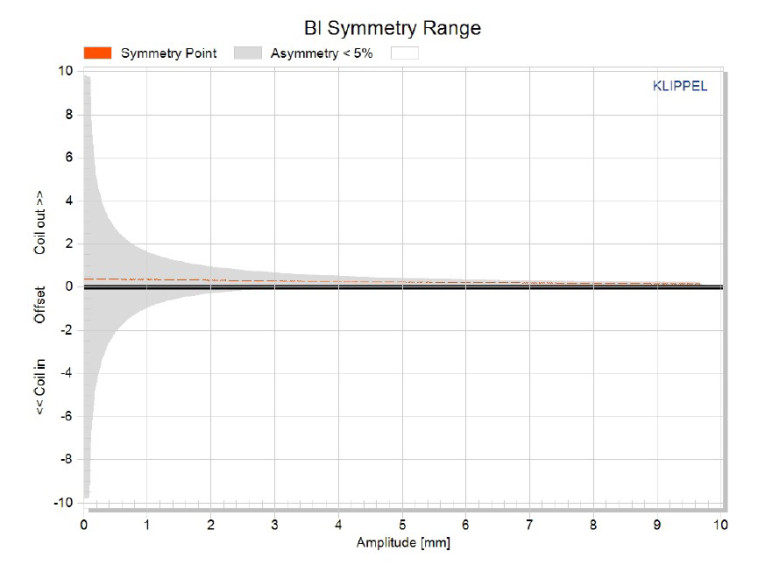
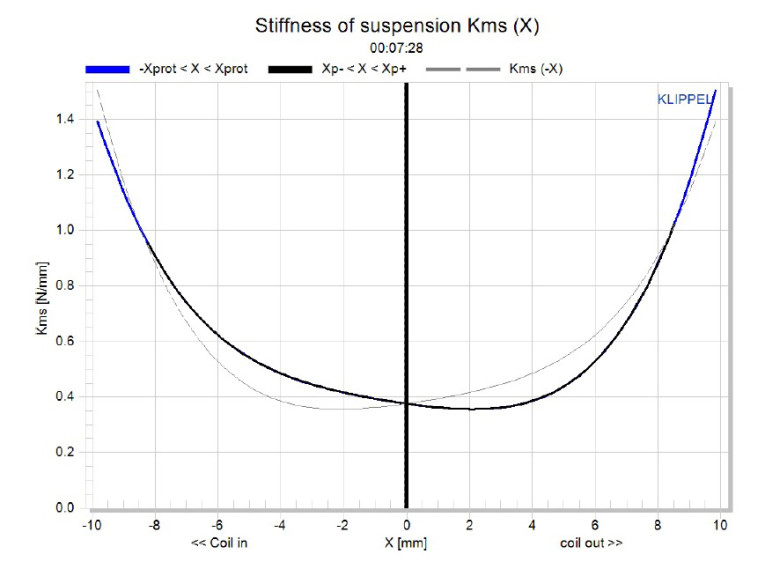

The CF120-4’s Klippel analysis produced the Bl(X), KMS(X) and Bl and KMS symmetry range plots shown in Figures 5–8. (Our analyzer is provided courtesy of Klippel GmbH. Patrick Turnmire of Redrock Acoustics performed the analysis. For additional information, visit www.redrockacoustics.com).
The CF120-4’s Bl(X) curve is symmetrical and pretty typical for a small 4.5” woofer (see Figure 5). Looking at the Bl symmetry plot, this curve shows a fairly constant, but small (0.3 mm) coil-out offset (see Figure 6). Figure 7 shows the CF120-4’s KMS(X) curve, which is definitely not as symmetrical in both directions as the Bl curve, but shows a decreasing coil-out offset that gets to about 1.2 mm at the physical XMAX position. Figure 8 shows the CF120-4’s KMS symmetry range curve.
The CF120-4’s displacement limiting numbers (calculated by the Klippel analyzer) were XBl at 82% Bl = 4 mm and for crossover (XC) at 75% CMS minimum was 4.3 mm. For the CF120-4, the Bl is the most limiting factor for prescribed distortion level of 10%, However, both numbers were greater than the driver’s physical XMAX.
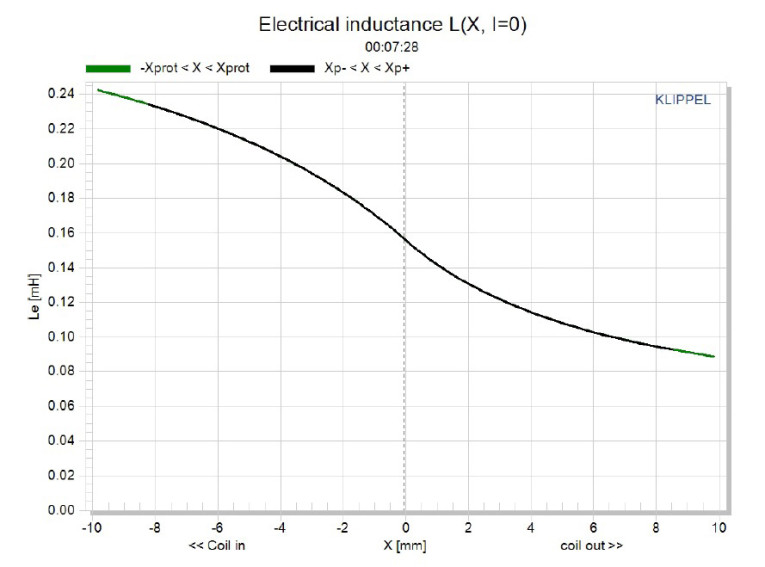
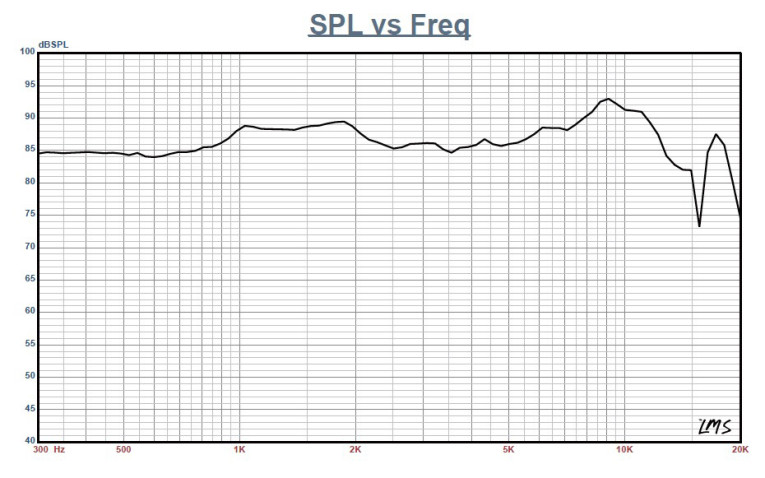
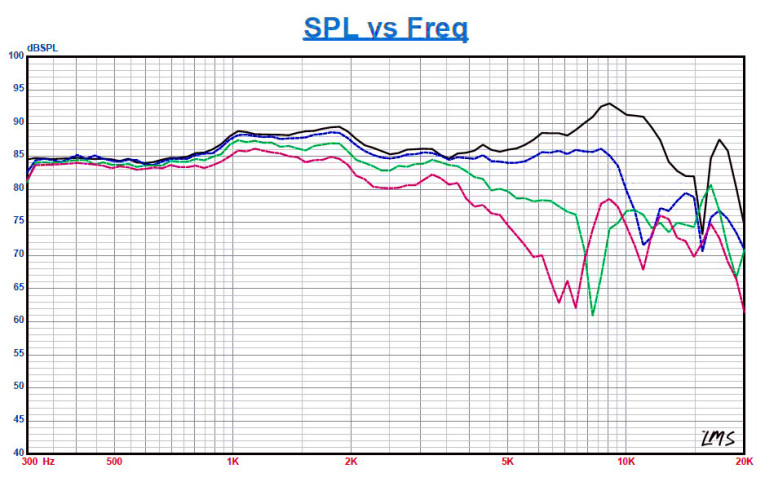
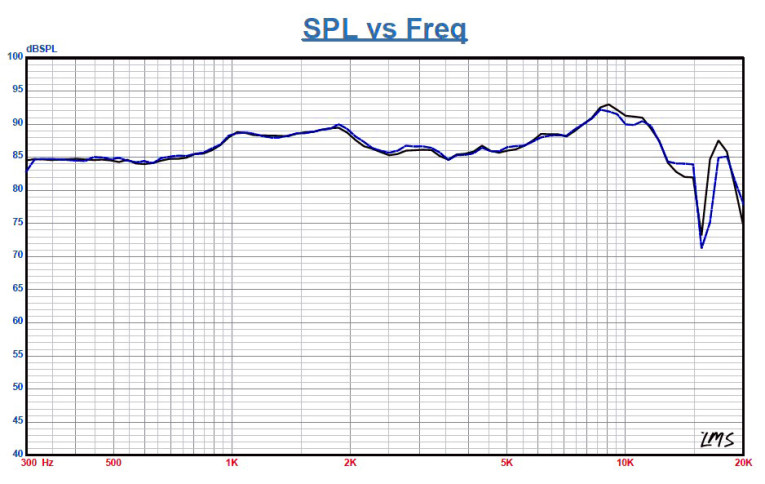
Figure 9 gives the CF120-4’s inductance curves Le(X). Inductance will typically increase in the rear direction from the zero rest position as the voice coil covers more pole area. However, since this driver employs a copper pole cap, the inductive swing is minimized. The result is a fairly minor inductance swing with inductive variation of only 0.04 to 0.05 mH from the resting position to the in and out XMAX positions, which is good performance in any driver.
Next, I mounted the CF120-4 in an enclosure that had a 15” × 6” baffle and was filled with damping material (foam). Then, I measured the device under test (DUT) on and off axis from 300 Hz to 20 kHz frequency response at 2.83 V/1 m and I set the LinearX LMS analyzer to a 100-point gated sine wave sweep.
Figure 10 gives the CF120-4’s on-axis response, indicating a fairly flat response with a 3 to 4 dB plateau between 1 to 2 kHz, followed by a smooth rise from 2.5 kHz to about 9 kHz where it begins is low-pass rolloff. Figure 11 displays the on- and off-axis frequency response at 0°, 15°, 30°, and 45°. The –3 dB frequency at 30° off axis relative to the on-axis SPL is about 2.8 kHz, suggesting a crossover between 2 to 3 kHz should be appropriate. Figure 12 shows the CF120-4’s two-sample SPL comparisons, with a 0.25 to 0.5 dB match throughout the operating range up to 5 kHz.

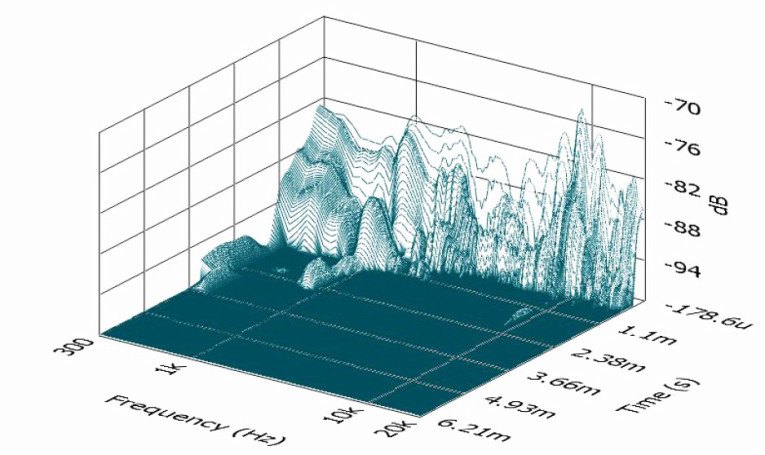
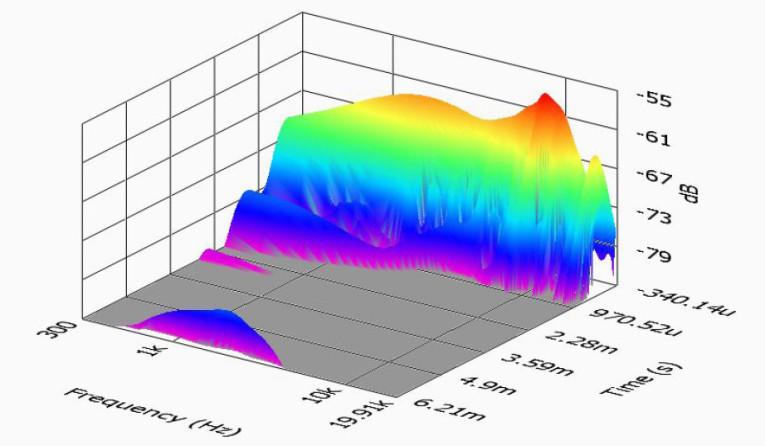
For the remaining tests, I used the Listen SoundCheck software, SoundConnext analyzer, and SCM microphone to measure distortion and generate time-frequency plots. For the distortion measurement, I rigidly mounted the CF120-4 in free air and used a noise stimulus to set the SPL to 94 dB at 1 m (6.04 V). I measured the distortion with the microphone placed 10 cm from the dust cap.
Figure 13 shows the distortion curves. I used SoundCheck to get a 2.83 V/1 m impulse response and imported the data into Listen’s SoundMap Time/Frequency software. Figure 14 shows the resulting CSD waterfall plot. Figure 15 shows the Wigner-Ville plot (used for its better low-frequency performance). Overall, the CF120-4 has great cosmetics and delivers good performance from a 4.5” midbass driver. For more information about Dayton Audio products, visit www.daytonaudio.com. VC
This article was originally published in Voice Coil, February 2016.




